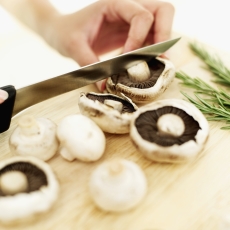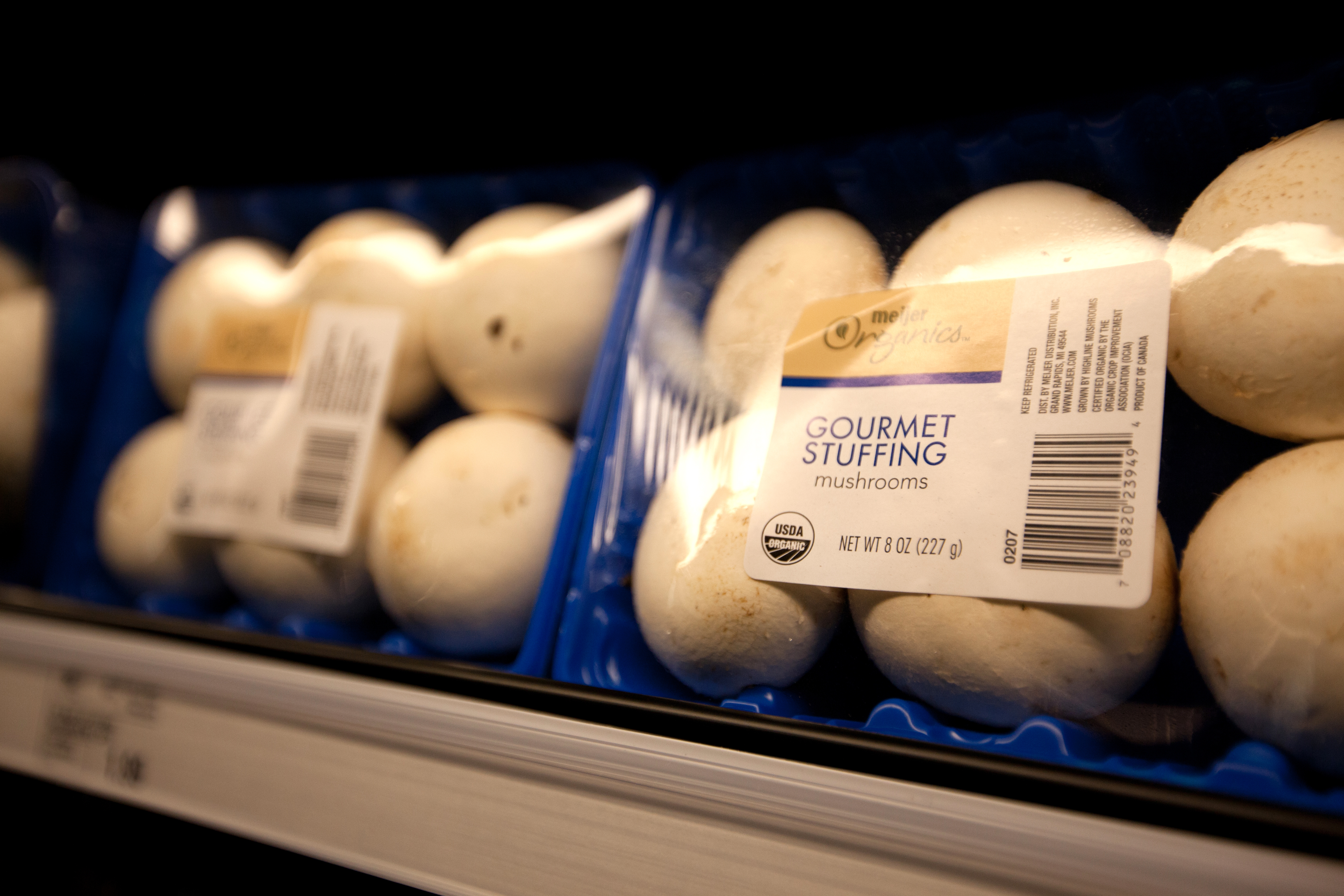The Mystery of Mushroom Storage Solved!
By Alice Osborne
 Food's too expensive to waste (and it's just wrong to waste, no matter what it costs). So it was with this thought in mind that I went looking for the best ways to store my fresh mushrooms—I've wasted too many by not storing them properly. And correct storage is a good thing to know, because we ought to be eating lots of mushrooms. Besides wonderful flavor, mushrooms deliver important nutrients to food (niacin, selenium, riboflavin, vitamin D, potassium, and ergothionene).
Food's too expensive to waste (and it's just wrong to waste, no matter what it costs). So it was with this thought in mind that I went looking for the best ways to store my fresh mushrooms—I've wasted too many by not storing them properly. And correct storage is a good thing to know, because we ought to be eating lots of mushrooms. Besides wonderful flavor, mushrooms deliver important nutrients to food (niacin, selenium, riboflavin, vitamin D, potassium, and ergothionene).
The thing I read over and over is that if fresh mushrooms are stored the right way, they'll last up to a week. The National Center for Home Food Preservation (USDA) tells how:
Remove them from the black or blue container they typically come in and then place whole or sliced unwashed mushrooms in a brown paper bag, and fold the top of the bag over. Then, place the bag on a shelf in the main compartment of your refrigerator.

Why does this work? The bag absorbs excess moisture from the mushrooms, so they don't get soggy or moldy (which is what was always happening to mine).
Here are some more savvy mushroom storage tips:
- Do not store mushrooms in the crisper drawer—it's too moist an environment.
- Washing mushrooms can make them soggy. Many people prefer to simply brush or to wipe them off.
- Avoid placing mushrooms near foods with strong odors or flavors—they'll absorb them like a sponge.
- Some mushrooms hold up better in the fridge than others. To avoid waste, try to buy your mushrooms close to when you plan to use them.
- If storing mushrooms for more than a week, consider freezing or drying them.
For freezing fresh mushrooms: Choose mushrooms that look and smell fresh. Avoid those that are dry, shriveled, darkened, moldy, have bad spots or give off an unpleasant odor. Either wipe your mushrooms or wash them in cold water. Then, trim off stem ends. Mushrooms over one-inch across should also be sliced or quartered.
Mushrooms need to be cooked before freezing. There are two ways to accomplish this.
Sauteeing: Heat the mushrooms in a frying pan with a small amount of butter or oil over high heat. Cook for five minutes or until they are fully-cooked and most of the liquid has evaporated.
Steaming: To minimize the darkening effect of steaming, soak the mushrooms in a solution of one teaspoon lemon juice or 1-1/2 teaspoons of citric acid to one pint of water for five minutes. Then, steam following these recommended times:
- Whole mushrooms - 5 minutes
- Button mushrooms - 3-1/2 minutes
- Quartered mushrooms - 3-1/2 minutes
- Sliced mushrooms - 3 minutes
Then to freeze: Allow the mushrooms to cool completely. Pack them in freezer-safe containers, leaving 1/2 inch of headspace for expansion; and freeze. Frozen mushrooms should be used within a year (sooner is better).
To Use Frozen Mushrooms: Drop the frozen pieces directly into recipes that will be heated or thaw your mushrooms in the refrigerator before using.
Two Things to Keep in Mind: 1) Freezing will change the color and texture of mushrooms, making them both darker and softer, and 2) steamed mushrooms have a longer freezer life than sauteed mushrooms.
Finally, something I'm doing that you might want to consider: I've created a chapter in my Cook'n 11 called "HOW TOs" as an organized place to keep all the helpful information the Cook'n Club Newsletter offers. Too often I've wasted time rummaging through my newsletter files to find that one helpful tip I just knew I had somewhere. Just sayin...
- www.mushroominfo.com
- www.newsroom.meijer.com
- www.growyourownmushrooms.net

Alice Osborne
Weekly Newsletter Contributer since 2006

